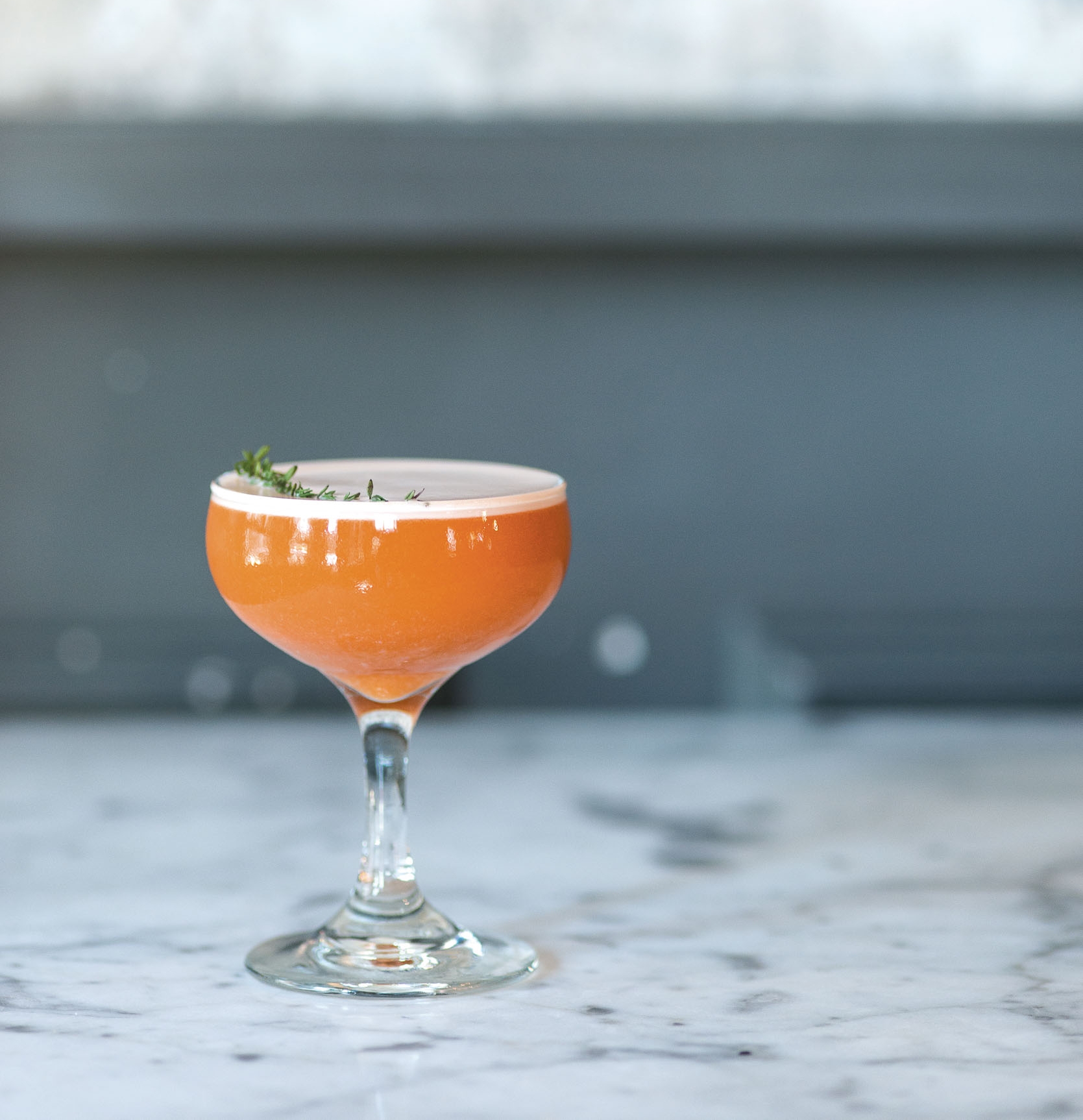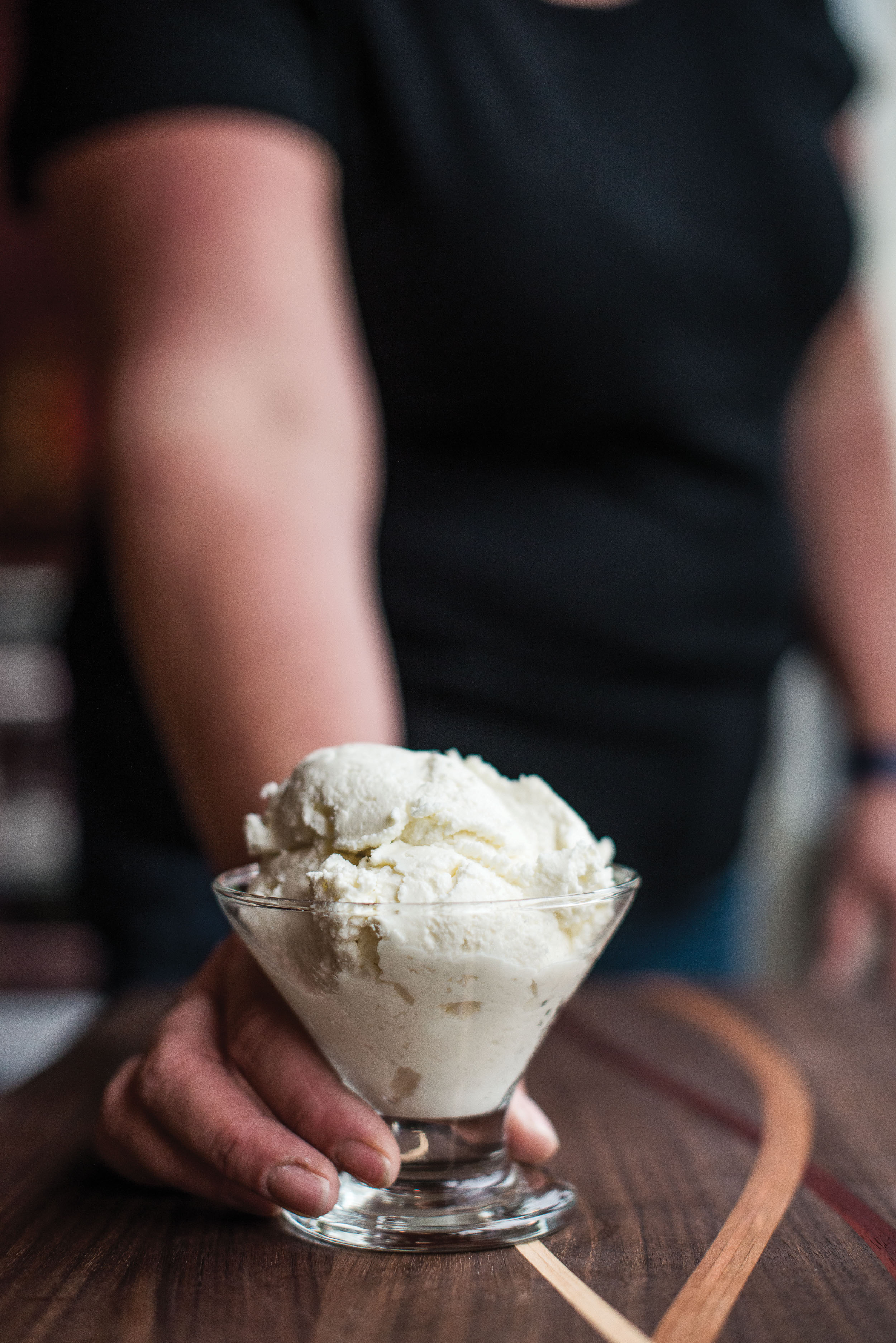Craft in a Glass

Mixologists are taking inspiration from farmers, chefs, and their own imaginations to forge a local cocktail identity.
Molly Wellmann, the story goes, showed up for one of her first guest bartending gigs at the longtime (and much mourned) OTR neighborhood spot Neon’s with a whole kit full of flavored simple syrups, herbs, and freshly pressed juices. Her fellow bartenders and that night’s patrons were taken aback. What’s with all the bottles and jars? But customers were soon lining up for one of Wellmann’s handcrafted drinks made not with foodservice mixers but with potions she’d made from scratch.
That was in 2010. And while plenty of local bars are still stocked with cheap, mass-market mixers and artificially flavored booze (birthday cake vodka, anyone?), savvy drinkers increasingly find housemade tonics, locally sourced ingredients, and regionally made spirits on cocktail menus across the Ohio Valley.
Farm-to-table has expanded to the glass.
It seems a natural occurrence that when chefs create dining menus focused on local ingredients, the restaurant’s cocktail program follows. As experienced bartender and L.A. transplant Catherine Manabat was working to develop the cocktail program at Metropole in the 21c Museum Hotel, which opened Downtown in 2012, she looked for inspiration to the same farms that were purveying ingredients for chef Michael Paley’s dining menu.
“There was always this question of, ‘Can you use this?’” Manabat recalls of the collaboration with Paley (she is now sales manager for Watershed Distillery in Columbus, and he has moved on from Metropole). “The kitchen always had ingredients coming in and they knew what the farmers were growing.
“One year, we got ginger grass, the tops of the plants, from Carriage House Farm,” she continues. “Michael asked if I could do anything with ginger grass. So we made a specialty cocktail with a switchel made out of the leaves.” It was well-received, so Manabat added it to the cocktail menu. And Carriage House sent over all of their ginger grass. “I had 50 pounds of ginger grass that I had to clean, break down, separate, and vacuum seal so we could use it for the whole season,” she says, laughing as she recalled the labor involved. “I’m obsessed with everything they grow at Carriage House—they make it really easy to be creative.”
At Metropole, Manabat says, there was—and is—a united front between the kitchen and the bar. “It’s the idea that if we’re spending time caring about the ingredients we put on the plate, we should spend an equal amount of time caring about the ingredients we put in the glass,” she says. “It’s farm-to-table meets farm-to-bar. It makes sense, but it’s surprising how many people still don’t have that culture—although it’s more the norm now than it used to be.”
It is increasingly the norm, as drinkers grow increasingly sophisticated and willing to reach beyond their standard gin-and-tonic orders—and as bartenders expand beyond traditional cocktail tropes. Manabat raves about what Stephen Clement, the bar manager at Salazar, is doing with seasonal ingredients. Across the river, Coppin’s at Hotel Covington has a bar menu that’s deeply rooted in place, with an emphasis on locally made spirits, especially bourbon.
Culinary Inspiration
The bartenders who care about what goes into the glass aren’t just the ones working in ingredient-driven restaurants; the approach is happening at stand-alone bars, too. And in turn, this region is developing a unique cocktail identity. You can’t walk into a swanky lounge in New York or a watering hole in Cleveland and get a drink made with Carriage House Farms ginger grass or New Riff Kentucky Wild Gin or garnished with herbs from Dark Wood Farm. “People are making more of an effort to think about using local ingredients, whether it’s locally made spirits or the mixers that they use,” Manabat says.
Julia Petiprin, the head of operations and design who opened Sundry & Vice in Over-the-Rhine with partners Stuart King and Ryan Rizzo in 2015, seems especially jazzed about what she sees in the Ohio Valley. A Michigan native who moved from L.A. to open Sundry & Vice (and who, like Manabat, planned for Cincinnati to be a brief stop on the way to somewhere else but fell in love with the place), Petiprin admires how bartenders are putting a local stamp on their craft.
“Cincinnati specifically has such a great culinary scene,” she says. “I moved here from L.A. to open Sundry & Vice, and I think Cincinnati is unique in how the industry is developing here. You don’t necessarily have the big-time consultants [professional advisers who create food and drink menus for restaurateurs] so it’s cool to see how the city is developing on its own. Because the food scene is so great, a lot of the chefs have inspired the cocktail scene and mentored the bartenders. A lot of what you see is culinary driven cocktails.”
Sundry & Vice changes its menu twice a year, with spring/summer and fall/winter creations; a customer fave on this summer’s list was the Double Dutch with fresh carrot juice, thyme, and aged rum. Petiprin says she frequently walks to Madison’s at Findlay Market to pick up fresh ingredients, and also buys from Waterfields and Dark Woods Farm in Northern Kentucky, among other purveyors. While it’s cheaper, obviously, for bar managers to stock commercial mixers, Petiprin compares them to processed food: artificially flavored and loaded with high-fructose corn syrup. “I love the flavor and quality of housemade ingredients; just like in the culinary world, it’s about getting people used to the real taste of things that are true and fresh.”
It’s not just about quality and freshness; it’s also about context. Throughout cocktail history, drinks we still know and love today—the Sazerac, the Mojito, the Mint Julep—are tied to a place. Here in the Ohio Valley, a new generation of bartenders are making a new generation of drinks for a new generation of patrons. “It’s one thing when you’re creating food or cocktails in a vacuum,” Manabat says, “and it’s a whole other thing when you’re creating things that matter to you in different ways and you’re embraced by people who come into your restaurant and share the same belief system. “People aren’t just drinking a beverage; people are tasting a story.”
Bryn’s long career in publishing took a left turn sometime around 2010, when she discovered the joy of food writing. Since then, she’s found professional nirvana as the editor of Edible Ohio Valley, author of The Findlay Market Cookbook, and occasional instructor at The Cooking School at Jungle Jim’s. Find her seasonal recipes at writes4food.com.





